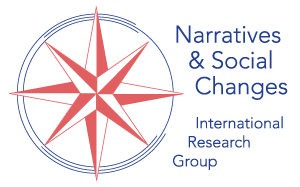The Narratives and Social Changes-International Research Group (NaSC-IRG) is established in the Department of Political and Communication Sciences of the University of Salerno (Resolution no. 138 of 23/09/2020) on the initiative of Prof. Emiliana Mangone with the aim of integrating researchers from universities and / or research centers in Europe (EU and non-EU), Latin America and other geographical areas engaged in analysis and research related to the narrative and role that these play for social change.
The question that arises, then, is: What use is made of narrative?
Without prejudice to the fact that the narrative has inherent in itself a very high degree of rhetoric – certainly accentuated by the forms of communication adopted – it promotes debate but not on all issues concerning society and certainly not in all places. Narrative is part of social life and this is an inescapable fact. Another unavoidable element inherent in the narrative is its conceptual ambiguity which often produces “perverse effects”: there is conflict in it. The narrative mobilizes in a global way even if it has a local appropriation.
The narrative is presented, therefore, in two forms: on the one hand, it is a way of knowledge and, on the other hand, it is a way of communication. Since the first allows the development of systems of ideas and the second their diffusion, it is easy to understand how the narrative assumes a central role in promoting social change because it orients the individual in one direction rather than another on the basis of use of the narrative by the subject (single or collective) as an instrument through which he perceives society, social reality and the future.
Taking up the symbolic axis proposed – global diffusion vs local appropriation – it can be seen that this represents the condition that characterizes the acquisition of information, images, knowledge and other artefacts in ways typical of globalized society, but interpreted and elaborated in places within which individuals conduct their daily lives in a direction that usually aims at the consolidation of values and beliefs. In the analysis of narrative (production, dissemination, appropriation) the dimensions of space and time cannot be overlooked: the world of narrative is temporal and situated.
